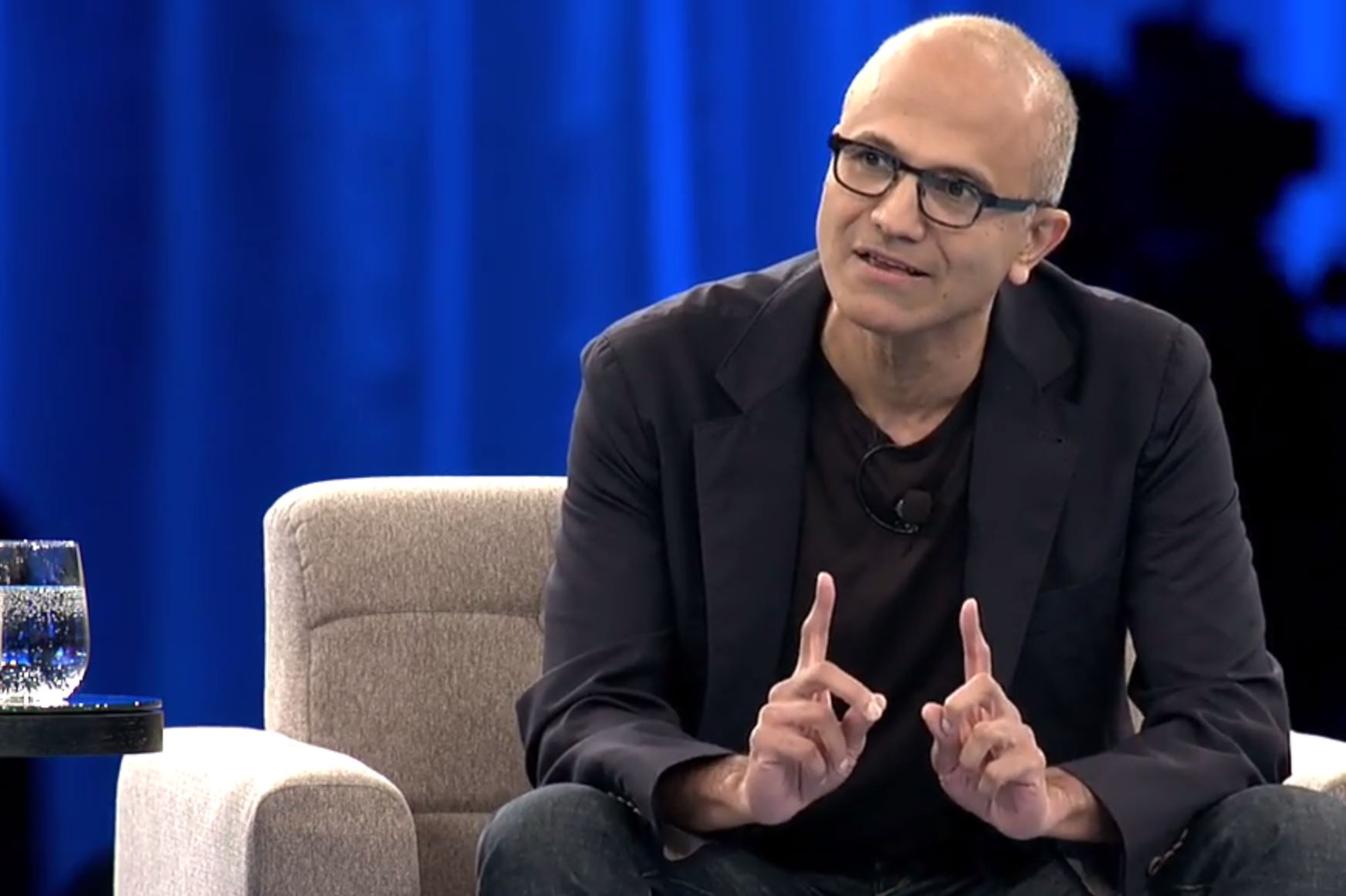At 0.3 percent marketshare of the global smartphone market, Microsoft has zero to extremely slim odds of ever entering that segment in a meaningful way. As such, don’t expect a Surface Phone to come in 2017, or for the foreseeable future.
Instead, what we’ll get is what Microsoft CEO Satya Nadella called “the ultimate mobile device.” Confused? Don’t worry, it’s meant to confuse. But if you’ve been following Microsoft’s mobile ambitions, you’ll know that Nadella has been cooking up something far beyond just another smartphone.
This is the man who strategized Microsoft’s growth turnaround and took his company’s stock to all-time highs. This is the man who broke Amazon’s cloud computing lead using the power of SaaS (Software as a Service) and has now put Microsoft neck-to-neck (or may have just surpassed) with AWS in terms of total cloud-based revenues. This is also the man behind Microsoft’s yet-to-be-revealed plans in mobility.
For Microsoft, the word ‘mobility’ is not synonymous or interchangeable with ‘smartphone.’ The smartphone movement of the past decade is now very close to its peak levels as multiple players fight it out in various segments – premium, mid and low range. Nadella knows that it will be foolish to try and enter that rat race at this point in time. So, he’s got something entirely different in mind.
It is this: What if you could take a full-fledged desktop, intact with all of its capabilities, and put that into a device the size of a smartphone or phablet?
Think about that for a minute. Device makers all over the world are trying to merge the smartphone experience with the desktop experience. Apple tried to do it with Handoff; Samsung did it with DeX; even Google is trying to get a handle on it by promising to bring the full Android experience into Chrome OS.
But none of them have succeeded. Yet.
Before they do, Microsoft wants to come in and swoop the entire market for that new segment they will have created. The best part is, they’re playing to each and every one of their strengths.
Let me elaborate on that.
What is Microsoft really good at, and has been for several decades? The desktop experience.
What has Microsoft been working on for the past few years and succeeded at, to an extent? Surface devices, meaning hardware.
And what segment of the market is currently Microsoft’s strongest? Enterprise customers.
Now, think of creating and delivering a mobile desktop experience on a premium Surface-build device and offering it to business and corporate users around the world. Are they going to lap it up? Heck no, companies are going to be lining up to get these devices for their employees, because it will make them far more productive than any smartphone on the planet ever has.
And that, we think, is what Nadella is cooking up at Microsoft.
Their first experiment in this area isn’t going to be a “Surface Phone”, but it is everything that a hypothetical Surface Phone might be. It will run desktop apps (Win32), it will run UWP apps, it can be extended to a desktop monitor via Continuum, and it will have killer specs for the kind of processing power it will need.
And it will be released as the “Cellular PC” that Microsoft and Qualcomm have been working on. The king of desktop operating systems and the king of mobile chipsets will work together and deliver what Microsoft CEO Satya Nadella has in mind.
Now, they may not call it the Cellular PC – from a branding perspective, that might not be such a great idea. They certainly won’t call it Surface Phone because that’s tied in with people expecting a smartphone. Irrespective of what they call it, it’s going to be something far better than any smartphone released to date.
Obviously, much of this is conjecture based on what Microsoft has said before, the various announcements it has made on that front and what we know about the state of the smartphone market.
However, if Microsoft makes a move in the direction of mobility, this is the ONLY option left for them to chose. Everything else has been done to death – so much so, in fact, that even Apple and Samsung are struggling with innovation. If you see the last few iterations of their flagship smartphones, all you’ll see is “better this” or “bigger that” or “more of that” – you’re not likely to see innovation in its purest form.
What Microsoft is trying to do may not be innovative if you look at the technologies involved in bringing the desktop experience to a mobile device. But “how” they’re doing it makes all the difference.
And that’s going to be the key to Microsoft’s success in the mobility space, not the smartphone space. And the sooner we understand that, the better we can appreciate the magnitude of what Nadella is trying to achieve here.
Thanks for visiting! Would you do us a favor? If you think it’s worth a few seconds, please like our Facebook page and follow us on Twitter. It would mean a lot to us. Thank you.



